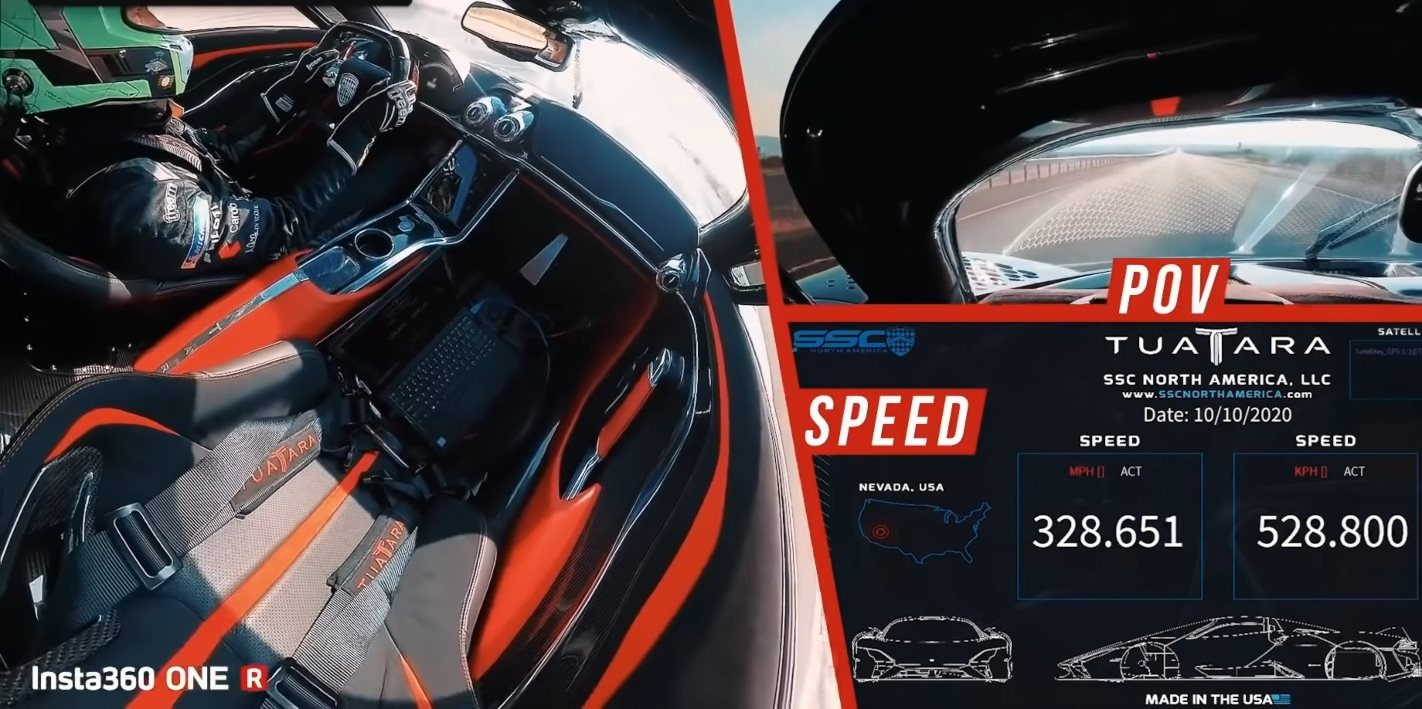
SSC has answered calls from the media and fans alike to explain the inconsistencies in its Tuatara production car speed record video, in which the hypercar appears to fall short of the claimed record-breaking speed.
According to the US car maker, an error in the video’s production is the cause of the apparently impossible speed of 508.73km/h, although the company has not detailed the exact nature of the problem.
“Somehow, there was a mix-up on the editing side, and I regret to admit that the SSC team hadn’t double checked the accuracy of the video before it was released,” said SSC founder Jerod Shelby.
The most likely explanation is that, the Driven Studios production team simply used the wrong footage of an earlier run in which the milestone speed was not achieved. We speculated this in our original story.
However, the response by SSC does not entirely appease suspicious watchers. If the incorrect footage was of a slower run, the laptop placed on the passenger seat contradicts the theory as it’s reading the record-breaking speed.
Once again, this either means the editing team intended to deceive and deliberately inserted the footage of the laptop reading a different figure to the speed the Tuatara was actually travelling at, or the speed measuring telemetry was inaccurate.
Measuring equipment supplier Dewetron was quicker to respond than SSC and has already commented on our story below, distancing themselves from the test but assuring the dependability of its hardware when correctly used.
“We neither take any responsibility for the parameters shown in the video above nor for their accuracy,” it commented. “Dewetron did not have the opportunity to analyse the measurement data or to confirm its accuracy yet. Therefore, Dewetron has not made a public statement yet”.

The hired gun at the wheel of the Tuatara during the record attempt, Oliver Webb, has also responded to the controversy, explaining he is not employed as a test-driver for the company and is unable to shed any extra light on the inconsistencies.
“I know nothing more than what I’m finding out online,” he confirmed in a social media video.
https://www.instagram.com/p/CG5O1zXhv6h/?utm_source=ig_embed&utm_campaign=loading
While acknowledging the mistake in editing and admitting it mislead anyone who assumed the video was an accurate representation of the historic run, SSC assures that the speed was indeed achieved.
Furthermore, the hypercar maker has promised to get to the bottom of the mistake and deliver the true video of the run.
Until then, we will remain skeptical.
Original story published October 27
Its exhaust manifolds have barely finished ticking and the bugs have only just been scraped from the Tuatara’s windscreen, but SSC’s world’s fastest production car record is already being scrutinised as potentially inaccurate or, at worst, faked.
Last week, the US car maker claimed it had snatched the coveted V-max title from Koenigsegg with an almost unbelievable figure of 508.73km/h laid down on a closed public road in Nevada… but it seems that number might not have been ‘almost’ unbelievable after all.
Poring over the information released by SSC, several analysts have now revealed inconsistencies between the claimed top speed, published data and video of the record run.
Controversially, though, all but one of the possible explanations arrive at an embarrassing conclusion – that the claimed top speed was simply not possible.
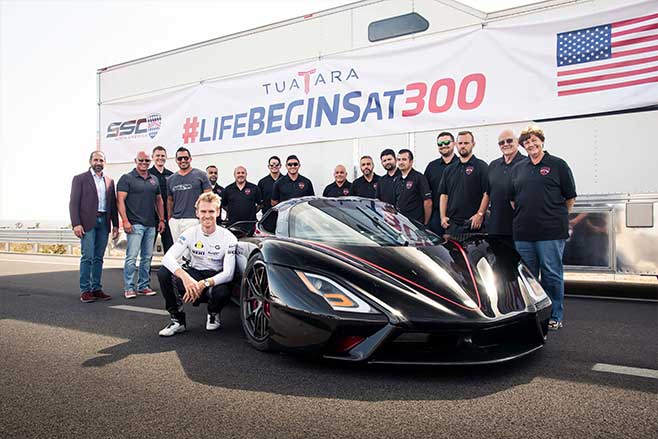
Here’s why several different methods of speed calculation, clearly laid out by YouTube star Tim Burton, who works under the moniker of Shmee150, suggest the SSC Tuatara only managed about 450km/h and may not have taken the production car world record from Koenigsegg after all.
How fast did the SSC Tuatara really go?
The simplest mathematical method of calculating the average speed of an object is distance over time. Conveniently, the road used near Las Vegas offers two measurable distance references in the form of crash barrier medians, and line markings on the road itself.
As for the time? That’s provided by SSC’s video. The easily identifiable breaks in the safety barriers are captured by the Tuatara’s onboard camera, and then it’s simply a matter of counting the seconds between the next median marker.
Even if there were small inaccuracies in the time measurement or distance between references, the simple calculation reveals the SSC was travelling at about 280mph or 450km/h – not slow, but also nowhere near the claimed new achievement.
The smoking gun, however, is the simultaneously overlaid speed reading according to SSC’s telemetry which can be seen repeated on the laptop in the passenger seat.
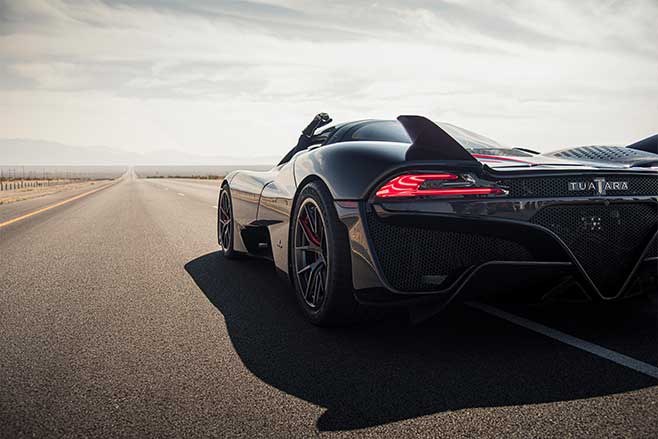
At all times, the displayed claimed speed is higher than the average speed the simple calculation suggests the car was actually travelling – which, of course, is mathematically impossible.
Exactly the same equation can be applied using the white lane markings also visible in the video.
As the lines are painted using a US standard of 3.5 metres followed by an approximate 9.0-metre gap, again it’s simply a matter of establishing the distance the car has travelled, compared with the time taken to cover it.
Using the white lines as a distance reference, the calculations, once again, propose a maximum speed of about 450km/h.
It’s exactly this simple but reliable method that was used as evidence to convict a driver in the UK recently, who posted a video which showed an Audi R8 being driven far in excess of the speed limit.
Either SSC’s video has been inexplicably slowed down – an unlikely move given it’s supposed to depict a Herculean feat of speed – or the car was, in fact, nowhere near the claimed maximum.
Koenigsegg Komparison
Usefully, the stretch of road used for the record attempt is the very same site for the Koenigsegg Agera test in 2017 allowing a second analysis of the SSC run.
When synchronised at the same start point, the Swedish monster passes a second reference point sooner than the SSC, suggesting it is going faster.
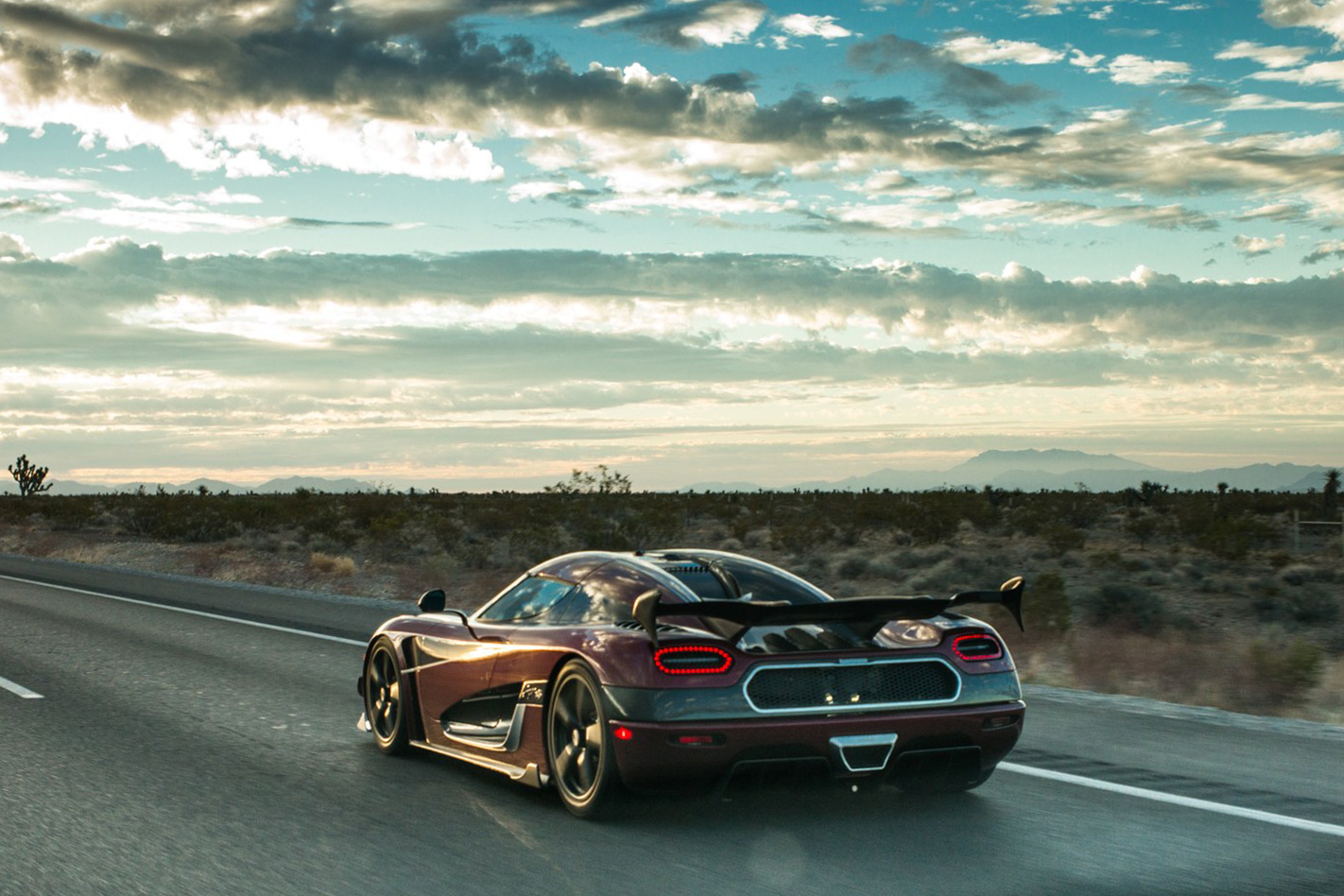
However, the speed reading displayed in the Tuatara video claims to be higher than the Koenigsegg at all points – again something doesn’t add up.
Either one video has been sped up, the other slowed down, or the SSC’s telemetry is inaccurate.
Devil’s in the detail
Finally, a third seemingly indisputable source of data can be used to establish if SSC’s car was capable of hitting the claimed speed before it even turned a single wheel.
Using the outside diameter of the tyres fitted, the transmission ratios and the maximum engine speed (all information provided by the car’s maker), the maximum permissible velocity of the SSC tuatara can be calculated.
For the final run, racing driver Oliver Webb chose to keep the car in sixth gear rather than flick up to top and back off ahead of the redline, but even if he had pushed it to the limiter, the maximum speed, bound by the mechanical design, is 471.5km/h.
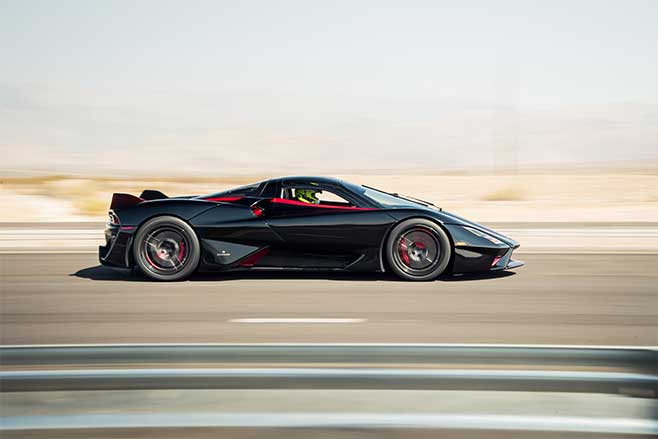
Of course, the car’s own speedometer might add some perspective or clarity but, adding to the controversy and suspicion, its reading is blurred out in the video as it passes 301mph (484km/h) – already higher than the car is mechanically capable of going in sixth.
Perhaps the pre-production unit had not yet been calibrated to display speeds higher than the final visible reading, or it may have been obscured to hide an inaccurate over or under reading.
Either way, it seems an unusual move in a record all about speed.
One final possibility is that SSC encountered a technical issue when filming the actual record-breaking speed and was forced to use footage of a previous slower run, but using speed figures from the actual milestone mission.
This is also hard to believe as the laptop is displaying a speed reading that is contradicted by all other reference and engineering methods of calculation.
Why would SSC slow the video without a disclaimer? Why did it blur the speedo without explanation?
And why do all methods of calculating the Tuatara’s speed using the information provided by its maker suggest it actually managed a max nearly 60km/h slower than it is claiming?
It appears that Burton didn’t attempt to contact SSC for verification, but the company has issued a brief press release attesting that the record was recorded accurately.
“DEWETRON, a globally respected GPS data-measurement manufacturer, has validated SSC North America’s claim that its Tuatara hypercar had averaged a top-speed run of 316.11mph (508.73 km/h) as recorded on October 10, 2020 near Pahrump, Nevada,” read the release.
“That average speed was determined based on two runs, of 301.07 mph (484.53 km/h) and 331.15 mph (532.93 km/h), travelling in opposite directions.
“DEWETRON has worked with SSC since the hypercar manufacturer utilized [sic] its GPS measurement systems for the Ultimate Aero top speed record in 2007. Four out of five of the last world top-speed records were measured and validated on the same DEWETRON system.”
As the expression goes, the simplest explanation is often the correct one, which in this case points to inaccurate measurement equipment or methods.
But until SSC can address the disparity and prove its claims, it’s possible Koenigsegg might still hold the world’s fastest production car record.




